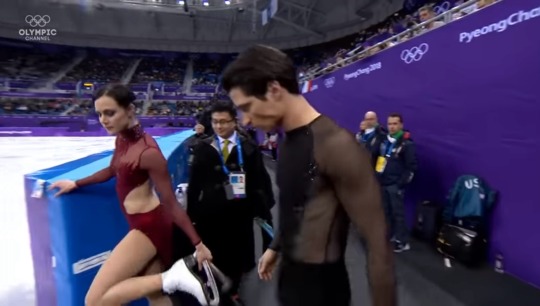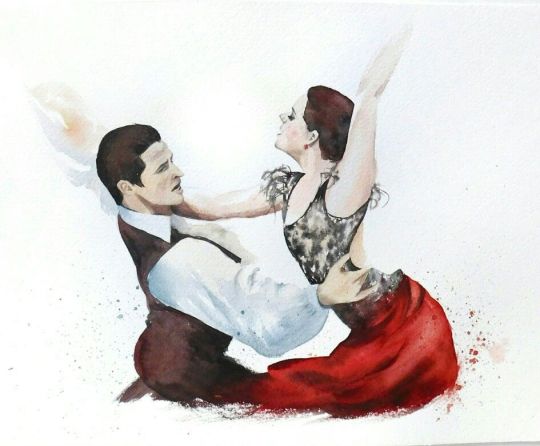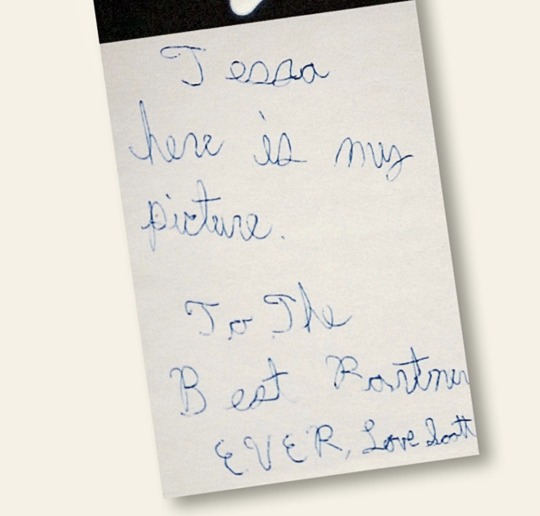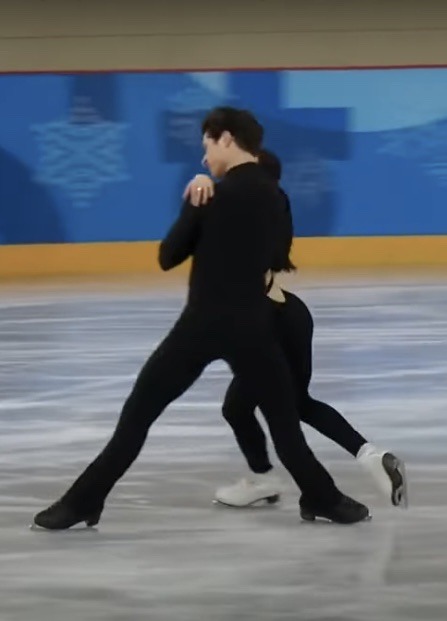Text
Who needs romantic love when you have friends
Friends that will sit by you when you’re having a breakdown, crying silently in the hallway. Just sitting next to you allowing you to rest your head on theirs. Their arm around you because they know you need that right then
Friends that know you better than you do, that remind you to take your meds and to eat and drink water. Friends that remind you that it’s okay to be stressed because it will all be over soon.
Friends that say “love you” before they leave, and you know they do in the way that they look, act, be towards you. The way that they hug every time as if it’s the last ever hug yall will have together.
I am so deeply in love with my friends. And if having friends like these mean I will never experience romantic love, then maybe being single isn’t that bad. Because I know I won’t be alone.
84 notes
·
View notes
Text
“But if you forget to reblog Madame Zeroni, you and your family will be cursed for always and eternity.”

4M notes
·
View notes
Text
Ice Dance Reimagined
With the upcoming ISU Congress in Summer of 2024 and ice dance seemingly in an unending beta of rule changes, I figured I would float a few thoughts on the many changes that have been made over the past few years.
As I mentioned in my RD Rules post, the ISU has essentially made moves to return to the original dance (making the change from short -> rhythm dance even more pointless in the first place) choosing to dictate broader themes.
To me, what makes ice dance so unique amongst all the disciplines is the variety of elements and styles that each team is expected to have in their repertoire and the fact that even in a given SD/OD/RD theme, people have to go out of their way to have a unique take. The rules which have lowered difficulty--in the name of giving skaters more room to be creative--have in fact resulted in the opposite. More teams are doing the same difficult features, same footwork, same lifts, same transitions than ever before. Both drawing on old choreography and leading to homogeneity across the discipline.
I propose a scheme which is a compromise of the two conflicting motions in ice dance right now: 1) the “no pattern ever” give everyone freedom vibes and 2) the people who believe the pattern is king. Alternate having a patterned and original short dance, giving the discipline an opportunity to develop new patterns (the original intention of the pattern dance type step sequence) while also ensuring that teams are continuing to emphasize solid ice dance foundations like skating in hold.
Original Short Dance Layout
1PSt
2Pst
Non-touch midline step sequence (style A)
Twizzles
Lift
Patterned Short Dance Layout
Pattern 1
Pattern 2
Non-touch midline step sequence (style A)
Twizzles
Lift
What the ISU (and choreographers/coaches) have fundamentally misunderstood about the appeal of patterns is that EVERY step is intentional and meant to elicit a specific effect and contribute to an overall impression. There's a reason that even though the Yankee Polka and Finnstep and Tango Romantica all include a LFI Closed S-Step, they have completely different timing and contribute to very different impressions. And it is because the general footwork in the pattern, in addition to just the difficult steps and turns, is geared towards reflecting the unique character of that pattern. I cannot count the number of pattern step sequences since 2017 that have effectively been copy pasted across blues, Latin, foxtrot/quickstep, blues x2, and Latin x2 once again programs with only minor changes to mini-lifts. They lack intention, they are the slowest section of the program for a good 90% of RDs because every team--no matter the style--is attempting to make their turns as drawn out as possible to get credit.
I propose that in original dance years there are 2 PSt segments, each with 3 KPs with the former 4th KP serving as a choreographic benchmark. This would allow for direct comparison of teams doing the same steps (and not allow teams to do the exact same difficult turns 5 years in a row) while simultaneously incentivizing creativity.
For example, under “Jig” below there are the following guidelines:
Jig is characterized by (1) high tempo, (2) rapid toe and heel steps, (3) jumps, kicks, hops and other accents including slides and shuffles, (4) tight and rigid torso, emphasis on leg movements over arm movements, (5) music in 12/8, 6/8, 9/8, 2/4. Teams are expected to pick music and a type of jig dance which fits these characteristics. 1PSt must start at center ice, 2PSt must end at center ice.
An example of key points:
1KP1: A) LFI Counter, LBI Bracket B) LBI Counter, LFI Bracket in any variant of closed hold except basic hand-in-hand
1KP2: both skip, LBO C-Step, RFI Swing S-step. in killian or foxtrot variant.
1KP3: A) RBO 1.5Tw, any kicking/tucking motion, RFI Bracket, RBO Bracket. B) LFO 1.5Tw, any kicking/tucking motion matching/mirroring/corresponding to partner A, LBI Bracket, LFO Bracket. Partners must be touching once exited from twizzles.
1PSt being completely prescriptive in KPs and 2PSt being slightly more flexible:
2KP1: both beginning any bracket, immediate counter, 1-5 intermediate steps where at least one partner must hit at least one difficult skating position* for at least a 1/2 beat, skid exit.
2KP2: both beginning swing FO C-Step, 3-8 intermediate steps/turns with partners MIRRORING each other, ending BO Counter. Partners must be touching entire time
2KP3: both beginning double S-step, 1-4 intermediate steps, ending with one partner on a BO edge and picking into the ice and the other partner doing at least one revolution around. PSt, officially concluded when the stationary partner resumes motion. Partners much be touching at two points until the first revolution around in 2KP3 is concluded.
Skaters would receive credit for the KPs accomplished in both and would receive a fourth Y/N based on whether they met choreographic requirements outlined in italics above.
*difficult skating position: any position where the skating leg is bent at least 90 degrees (shoot the duck, hydroblade, any lunge, any crouch), besti squat, spread eagle, ina bauer, spiral, layback, etc.
Now for some theme ideas:
2024-2025 - Patterned Short Dance - Grand Ballroom with a pattern of Golden Waltz
Teams must skate a program which reflects the character of the waltz particularly with regards to (1) lilting knee action, (2) closed position in hold, (3) repeated rotation as a unit when progressing across the ice, (4) movements should appear long, extended, and with sweeping open posture, (5) tone and musical themes may vary as long as a waltz character is maintained.
2025-2026 - Original Short Dance - Jig
Jig originated in Ireland and Scotland, gradually progressing throughout the British Isles and mainland Europe and then throughout the world including in the Metis people of Canada and Louisiana. Straight and sand jigs were developed in the US by African Americans in the 19th century which eventually influence the creation of jazz and tap. Jig is characterized by (1) high tempo, (2) rapid toe and heel steps, (3) jumps, kicks, hops and other accents including slides and shuffles, (4) tight and rigid torso, emphasis on leg movements over arm movements, (5) music in 12/8, 6/8, 9/8, 2/4. Teams are expected to pick music and a type of jig dance which fits these characteristics.
2026-2027 - Pattern Short Dance - Percussive Dances with a pattern of Paso Doble
(1) Stomping, toe picking, clapping, other percussive elements involving hitting the legs or torso, (2) dance is primarily danced to the RHYTHM and TEMPO not the melody, if there is a section without audible rhythm the team should create that beat using percussive elements (3) music must include a beat throughout, a melody is not necessary, (4) a theme should remain consistent throughout, if movements are drawn from a traditional dance they should reflect the character of the music chosen and the pattern should be interpreted appropriately.
2027-2028 - Original Short Dance - Music and Rhythms of the 1970s
The 1970s were one of the most influential eras of music, giving birth to entire new genres and styles and furthering the popularity of funk, soul, R&B, jazz, glam rock, folk rock, pop, disco, reggae, electronic music, and the birth of hip hop, it was defined by experimental sounds due to new music equipment.
(1) Music choices and rhythms should be COHERENT and related, the two music choices should be related thematically, structurally, or stylistically beyond more than just being from the 1970s, (2) one piece of music should be high tempo (>120bpm) and one piece should be low tempo (<100bpm), a third piece can be skated to any tempo, (3) the holds, movements, and steps in the PSt should reflect the style of music and dance chosen
2028-2029 - Pattern Short Dance - Jazz and Tap with a pattern of Quickstep
Jazz dance is a particularly broad genre that includes original social dances like the Charleston developed in parallel to the birth of jazz in Harlem, as well as more modernized styling.
Skaters should take inspiration from dancers like Bill Robinson, Jack Cole, Fred Astaire, Gus Giordano, nd Bob Fosse, as well as Broadway stage choreography and tap dance.
(1) Music choices and rhythms should be COHERENT and related, the two music choices should be related thematically, structurally, or stylistically, (2) one piece of music should be high tempo (>120bpm) and one piece should be low tempo (<100bpm), a third piece can be skated to any tempo, (3) the Quickstep timing can be adjusted to fit the tempo of the music chosen and to reflect the character of the chosen choreography.
See: https://gotta-dance.com/brief-history-of-jazz-dance/
2029-2030 - Original Short Dance - Nuevo Latin
The ISU has done a whole lot of cha cha, rhumba, and samba, but those are FAR from the only Latin rhythms. Dancers will be challenged to develop a new pattern that isn’t already an ISU pattern (and one that hasn’t been done a million times).
Examples of other rhythms: bachata, cumbia, danzon, salsa, mambo, merengue, bomba, lena, perreo, etc.
(1) The entirety of the PSt should be done in the same style and tempo but can differ from the the rest of the program. (2) Dancers are only required to pick one rhythm style but 2-3 are permitted. (3) skaters must have two points of contact with each other the entirety of the PSt, (4) at least 6 changes of hold must take place during the PSt, this can be from the same to same hold as long as a step or turn takes place during the change, (5) 1PSt must begin at the end of the long axis, 2PSt must end at the same end.
Choreo deductions: obvious use of cha cha, rhumba, or samba music/choreo. Tango, paso doble, and flamenco also excluded.
2030-2031 - Pattern Short Dance - Folk Dances with a pattern of Polka
Folk and country dance is characterized by it's informal and reflection of the general populace intended for widespread social dance. As opposed to court and ballroom dances, it should not be characterized as refined, ritual, or for stage performance. Skaters are encouraged to choose a folk dance related to their background. (1) Polka is skated to a bpm of 120bpm +/-4 and can be skated to and interpreted in any kind of musical style, (2) the same folk dance theme should remain constant throughout the dance or if two dances are chosen they should be closely related (i.e. the non-touch midline step sequence done in the line dancing style and the polka in the square dance style) (3) skaters may have a non-touch portion of their 2PSt provided they remain within one arm-length of each other.
Examples of folk dances include: maypole, hora, tarantella, polka, square dance, clogging, Dutch crossing, oberek, mazurka, Morris , polska, ballu tundu, bhangra, circassian, dabke, garba, khigga, romvong, peacock dance, nongak, yangge, chacarera, zamba, malambo, marinera, akayida, kizomba, agbadza, baile folklorico, shota, rugovo, cumbia, landler, schuhplatter, sardana, dragon dance, lion dance, mapale, danza de la tijeras, jenkka etc.
2031-2032 - Original Short Dance - Swing and Social Dances
Despite the many years of jive, charleston, and jitterbug original dances, there is no swing (or related dance) pattern. Dancers are to pick a swing-adjacent dance style and create a pattern. Examples: charleston, lindy hop, jive, jitterbug, shag, boogie woogie.
(1) Dance style should generally be from the 1920s-1950s era, (2) skaters should include intricate changes of positions for each partner reflecting the highly athletic nature of swing dancing, (3) 1PSt should begin in front of the judges with a 1-2 second mini-lift and end in the same location, 1PSt and 2PSt should consist of similar patterns across the ice and each take one lap, (4) skaters should utilize hops, skips, assisted jumps, and up to 3 mini-lifts per PSt to reflect the character of their chosen dance.
Swing does NOT necessarily need to be up tempo if choosing a style such as West Coast Swing which is danced with a distinct lack of bounce.
And then with time in "pattern" years, new patterns will arise and be eligible for interpretation. Would love to hear people’s thoughts :)
35 notes
·
View notes
Text

Only recently found out this squishy bitch has hyper extension as well as flat turnout 😑
12 notes
·
View notes
Text

The Office “Dinner Party” episode except these are your hosts 😁😁
Inspired by this edit from @theapartm3nt
11 notes
·
View notes
Text

*if these damn judges fuck me and my kiddo over again i swear* Jaw Clench
19 notes
·
View notes
Text

Tessa Virtue & Scott Moir
follow me on insta for more figure skating art x
54 notes
·
View notes
Text

vm fans during the pyeongchang olympics
8 notes
·
View notes
Text
How did this man’s handwriting go from this to this 😂😂


25 notes
·
View notes
Text

You break my neck, I’ll break yours
23 notes
·
View notes
Note
hi! i am a new ice dance fan and was wondering if you could explain why everyone is saying the sport is going downhill?? just trying to learn!!!
Oh boy…. That’s a long story.
The quick version, as pertains to ice dance:
There used to be 3 segments of competition: compulsory dance, original (then short, then rhythm) dance, and the free dance
In the 70’s,80’s,90’s (and earlier?) teams would compete at least 2 compulsory dancers, then OD and FD. It was cut back to one CD around 2000- so eg the 2002 Olympics was one CD, OD, FD. After many scandals relating to judging and corruption, the ISU got rid of the 6.0 scoring system and brought in what is used now known as the Code of points.
Through 2000-2010, teams competed the CD, OD and FD. After the 2010 season (where VM won olys and worlds) the ISU abandoned the CD from senior competition bc ‘it was boring’ and ‘took up too much time at competitions’
As a compromise they rejigged the 2nd portion of competition- renaming it the ‘short dance’ which was very strict and technical- each year there was a chosen rhythm and set pattern dance within their own choreography every team had to perform- so it at least had a compulsory portion where every team was compared directly against each other. After 2018 (when vm won again) they renamed it the ‘Rhythm dance’ and since then have slowly been loosening to rules and requirements to make it less objective- so essentially judges didn’t have to justify their scoring and could just award what they liked. There is also a scoring component called GOE- grade of execution which was increased from 3 to 5 (plus or minus- a score which is added or deducted from each element base value)- this part of the score was given much more weight and priority so essentially a team could perform a fairly easy lift which isn’t worth many points, but the judge decides they really like the lift and can make up that teams points with a high GOE mark if they choose to. And vise versa- give a team low GOE to knock them down even if they are technically strong.
After 2022 olys the set/compulsory pattern was removed all together- so there is no part of ice dance competition now that offers direct comparison. Judges don’t have to reward the actual best team‼️This is where you get fans complaining about teams that are not technically strong scoring well/winning bc the judges “like” them or there is some other (bribe/political) incentive to reward that team.
It is impossible I think to get rid of all corruption in skating, but the 2007-2018 era/s at least had *some accountability (don’t get me started on VM vs DW)
The announcement yesterday that there is not even a solid set ‘theme’ or rhythm going forward (aLeDgEdLy) is infuriating. Add to that that there is no traditional, classical dance left in ice dance- no ballroom, latin, classical ballet. Die hard fans love compulsory dances like the golden waltz and tango romantica bc when a team ( VM) does it well it is ice dance at its purist.
The isu is essentially telling us what is good when we all damn know it’s not good. They are taking us for fools, they are pandering to tik tok audiences bc they know people don’t have the patience or interest to watch actual skating competitions and think they will get audiences back by “modernising” the sport bc people these days can’t relate to tangos and waltz.. which is BS bc back in the 80’s people weren’t getting around waltzing and tangoing at clubs and parties- this is classic dance and art that actually works on ice bc it is adapted from ballroom dance. Not sliding on the ice breakdancing to Party Rock Anthem!🤮
I’ll stop there bc this is getting long and blogs like @macaroni-rascal @anewbeginningagain etc can explain the technical stuff much better than me
16 notes
·
View notes
Text

That’s an “I did it, bitch!” expression if I’ve ever seen one 😙😌
28 notes
·
View notes
Text

Hello all 👋
Today I bring you Mr Scott’s BEAUTIFULLY pointed and stretched 90degree developé. 🩰
You are welcome 🙏
32 notes
·
View notes
Text
I would watch 24eps x 10seasons of variations of this stroking pattern 🥲
21 notes
·
View notes
